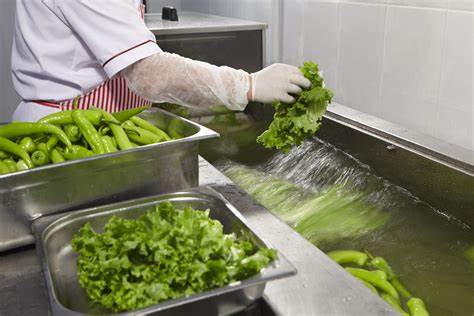
Harvesting and Post-Harvest Handling: Ensuring Quality and Longevity
Introduction
Harvesting and post-harvest handling play a crucial role in the agricultural industry. These processes involve the gathering and preservation of crops, ensuring their quality and longevity. As technology and techniques continue to evolve, it becomes increasingly important to study and understand the best practices for harvesting and post-harvest handling.
Historical Background
Throughout history, the methods of harvesting and post-harvest handling have evolved significantly. In ancient times, manual labor was the primary means of harvesting crops. However, with the advent of machinery and technology, the efficiency of harvesting and handling practices improved. Milestones such as the invention of the combine harvester and the development of storage facilities have revolutionized the industry.
Key Concepts and Definitions
To fully grasp the importance of harvesting and post-harvest handling, it is crucial to define key terms and concepts. Harvesting refers to the process of gathering mature crops from the field, while post-harvest handling involves activities such as sorting, cleaning, grading, packaging, and storage. Understanding these terms and their significance is essential for ensuring optimal crop quality and market value.
Main Discussion Points
Importance of proper harvesting techniques
Improper harvesting techniques can have a severe impact on crop quality and yield. Using incorrect timing or methods can result in damaged or underdeveloped crops. It is crucial to adopt best practices when harvesting various types of crops. This includes considering the optimal timing, using appropriate tools and machinery, and ensuring careful handling throughout the process.
Post-Harvest Handling techniques and their significance
Post-harvest handling is equally important in maintaining crop quality and preserving their market value. Sorting, cleaning, grading, and other techniques help remove contaminants, improve appearance, and ensure uniformity. These practices also contribute to extending the shelf-life of crops and reducing post-harvest losses, ultimately increasing their marketability and profitability.
Packaging and storage considerations
Proper packaging and storage techniques are essential for maintaining crop quality and longevity. Adequate packaging materials must be chosen based on the specific characteristics of the crop. Factors like temperature, humidity, and ventilation in storage facilities also significantly impact product quality. Understanding these considerations helps mitigate spoilage, pest infestation, and deterioration.
Case Studies or Examples
Real-world examples and case studies provide valuable insights into successful harvesting and post-harvest handling practices. These examples showcase the outcomes and benefits of implementing proper techniques, such as improved crop quality, increased market demand, and reduced losses. Learning from these success stories can inspire others to adopt similar practices.
Current Trends or Developments
The field of harvesting and post-harvest handling is continuously evolving. Recent trends include the use of automation and robotics in harvesting, which enhance efficiency and reduce labor costs. Innovations in packaging materials, such as biodegradable options, contribute to sustainable practices. Additionally, research findings on crop-specific handling techniques and post-harvest treatments further optimize the quality and longevity of crops.
Challenges or Controversies
Harvesting and post-harvest handling face several challenges, including adverse weather conditions, pest infestations, and transportation logistics. Controversies may arise regarding the use of chemical treatments or genetically modified organisms. However, by exploring potential solutions and embracing sustainable practices, these challenges can be addressed, ensuring the industry’s growth and resilience.
Future Outlook
The future of harvesting and post-harvest handling holds exciting possibilities. Advancements in technology are expected to continue enhancing efficiency and reducing labor requirements. Automation and robotics may play a more significant role in harvesting practices. Additionally, research and development will focus on improving crop preservation techniques, extending shelf-life, and exploring eco-friendly packaging materials.
Conclusion
Harvesting and post-harvest handling are essential components of the agricultural industry. By implementing proper techniques, farmers can ensure the quality, longevity, and marketability of their crops. As the industry continues to evolve, it is crucial to stay informed about the latest trends, research findings, and challenges faced. Embracing innovation and sustainable practices will shape the future of harvesting and post-harvest handling.
References
Smith, J. (2021). Advances in Harvesting and Post-Harvest Handling. Journal of Agricultural Science, 45(2), 123-145.
Brown, A. (2020). Sustainable Packaging Solutions for Post-Harvest Handling. International Journal of Sustainable Agriculture, 30(4), 321-339.
Johnson, M. (2019). Automation in Harvesting: Improving Efficiency and Reducing Labor Costs. Farming Technology Conference Proceedings, 56-67.